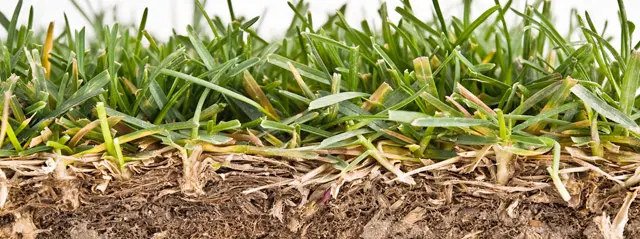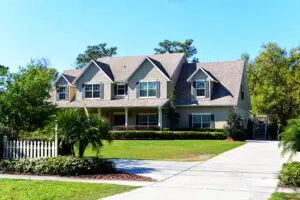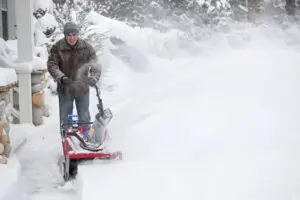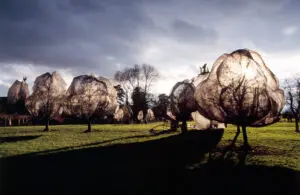After a rough summer of high heat, lots of foot traffic and dry conditions, your turfgrass has taken a beating and it needs some help getting back to health.
Thatch ~ The Demon that Kills Your Grass
Thatch is that layer between your live grass line and the soil line. It’s made up of dead and living leaves, roots, and stems. Some thatch in your yard is fine—up to a half an inch or so. However, when your thatch levels reach an inch or more, it’s time to remove it before it kills your lawn.
Here are five reasons why thatch has overdeveloped on your Rockland County, NY or Bergen County, NJ lawn:
- Cold season grasses, such as Kentucky bluegrass, creeping fescue and creeping bentgrass, popular grasses for New Jersey and New York lawns, produce too much lignin and therefore produce a lot of thatch. Conversely, you can plant perennial ryegrass and tall fescue in your lawn. These bunch type grasses don’t produce a lot of thatch.
- Scalping your lawn which includes cutting your grass too low as well as mowing too often.
- Too much fertilizer causes your grass to grow too fast and develop thatch.
- Compacted soil from a lot of foot traffic, regular mowing and the result of clay soils is a normal part of having a lawn. Yet, these regular activities lead to thatch build up.
- Acidic soil discourages the breakdown of thatch and also inhibits soil micro-organisms from breaking down excess thatch. At Majestic Lawn Care and Landscape, we will perform a soil test first to see if your soil is acidic. If it is, then we’ll apply lime this fall to neutralize your soil.
Thatch really is a monster that will kill your lawn if it’s not dealt with. Too much thatch suffocates your lawn because the micro-organisms that live in the soil can’t get water, light, and nutrients to breakdown the thatch. Plus, water is unable to penetrate deep into the soil for grass roots to develop strong anchors. As a result, your grass will start to dry out and die.
When we dethatch (remove thatch from your yard), we’ll use vertical mowers, and power rakes that work perpendicularly to your soil to pull up thatch. You may notice that it also thins out your turfgrass. That’s why dethatching works hand-in-hand with core aeration, fall fertilization, overseeding and gypsum. Not only do we remove thatch, but we’ll pull plugs out of your soil, using an aerator, so that more water, light, air circulation, nutrients and new seed can penetrate through the grass line and deep into the soil.
Overall, some thatch in your lawn won’t harm it. As a matter of fact, a small amount of thatch actually acts as insulation for your soil during the winter. Yet, if thatch develops more than a ½” or so, it will wipe out your lawn.
Does your Rockland County, NY or Bergen County, NJ lawn need to be dethatched this fall? Do you need core aeration and overseeding services too? Then schedule your appointment today at (845) 708-2988 or fill out our contact form.
Sources:.
Landschoot, Peter. “Managing Thatch in Lawns,” Penn State University: Plant Science.
Wikipedia. “Lignin.”





